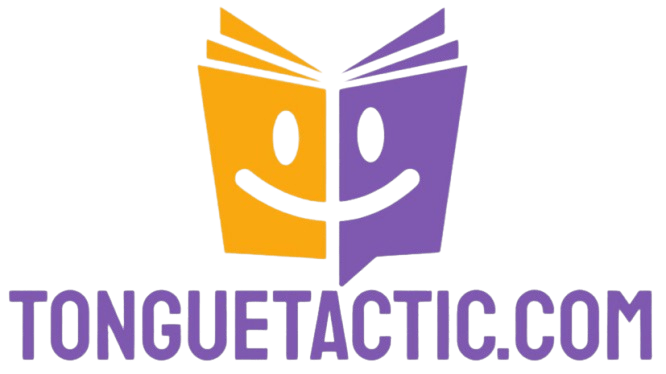the importance of interactive elements in language courses
In today s fast-paced digital landscape, language learning has undergone a remarkable transformation. Interactive elements have become essential tools for effective education.
Join us as we explore how interactive elements can transform your language learning experience! This article delves into the reasons why engaging components are vital for boosting your motivation and retention as a learner.
You ll discover various interactive tools, from games and virtual conversations to collaborative projects, and uncover the many benefits they offer.
You will also learn best practices for integrating these features into your language courses, confront common challenges, and examine future trends in interactive language learning.
Get ready to unlock the amazing potential of interactive elements as you embark on your journey to mastering new languages!
Contents
- Key Takeaways:
- The Role of Interactive Elements in Language Learning
- Types of Interactive Elements
- Why Interactive Learning Matters
- Incorporating Interactive Elements in Language Courses
- Best Practices and Strategies
- Challenges and Solutions
- Overcoming Obstacles in Implementation
- Future of Interactive Language Learning
- Trends and Innovations
- Frequently Asked Questions
- What are interactive elements in language courses and why are they important?
- How do interactive elements benefit language learners?
- What are some examples of interactive elements in language courses?
- How can language instructors incorporate interactive elements into their courses?
- What are the benefits of incorporating interactive elements?
- Are there challenges to incorporating interactive elements in language courses?
Key Takeaways:
Interactive elements boost engagement, retention, and language skills. Incorporating a variety of interactive tools, like games, virtual conversations, and collaborative projects, makes language learning more effective and enjoyable. To successfully incorporate these elements, language instructors should follow best practices and strategies while being ready to overcome implementation challenges.
The Role of Interactive Elements in Language Learning
Interactive elements are crucial for enhancing your language learning experience, as they create engaging scenarios that inspire you to participate actively, especially when considering the role of feedback in language learning courses.
By using technology, educators can introduce a variety of interactive tools like quizzes and game-like elements that improve your ability to retain and apply knowledge.
This approach accommodates diverse learning styles and encourages collaboration among peers, making learning fun and effective.
Institutions like Harvard University and innovative companies such as Mussila lead the way in integrating these engaging tools into online courses, providing you with a rich and immersive educational experience tailored for remote learning.
Why Interactive Elements are Important
Interactive elements significantly enhance engagement and knowledge retention by encouraging active participation.
Research shows that incorporating game-like elements, simulations, and collaborative projects into your learning experience can greatly boost motivation. For instance, a study from the University of Colorado found that students involved in a gamified science curriculum showed higher enthusiasm and improved critical thinking skills compared to those in traditional teaching settings.
Additionally, real-world applications like virtual labs in STEM education allow you to experiment in a risk-free environment, deepening your understanding of complex concepts. This hands-on approach makes learning enjoyable and correlates strongly with better educational outcomes, showcasing the transformative power of interactive methods in today s classrooms.
Types of Interactive Elements
You can use various interactive elements in language learning to create dynamic and engaging educational experiences.
Imagine quizzes that reinforce your knowledge, game-like techniques that spark friendly competition, and immersive videos that provide real-world context for your practice.
Collaborative projects facilitate peer learning and enhance your communication skills, while virtual classrooms offer real-time interaction with teachers and fellow students.
Together, these tools create a rich learning environment that caters to diverse learning styles, making your educational journey more effective and enjoyable.
Games and Activities
Games and activities are vital components of an interactive language learning curriculum, designed to boost engagement while reinforcing your language skills.
These dynamic methods invigorate your learning experience by fostering collaboration and critical thinking.
Whether through role-playing exercises that simulate real-world scenarios or vocabulary games that encourage friendly competition, these elements can significantly enhance your grasp of new concepts.
Interactive activities create a relaxed environment, allowing you to practice language use without the stress of judgment, which boosts your confidence.
Ultimately, these enjoyable experiences not only improve your skills but also foster a sense of community, making the learning process effective and truly memorable.
Virtual Conversations
Virtual conversations offer an exceptional platform to practice your language skills in realistic settings. They foster collaboration and immersive learning.
These interactions create a sense of community and provide opportunities to engage with diverse perspectives.
Talking with peers from different backgrounds helps you grow your vocabulary. You ll also improve your pronunciation in a supportive setting.
This real-time use of language in discussions lets you get immediate feedback, reinforcing your understanding and retention.
Such exchanges build your confidence as you navigate various topics and situations. They effectively bridge the gap between theoretical knowledge and practical use.
Ultimately, embracing this form of learning can significantly elevate your fluency and comprehension.
Collaborative Projects
Collaborative projects enhance your learning by fostering peer interaction. They help you hone your critical thinking and problem-solving skills through dynamic group activities.
When you work together towards shared goals, you immerse yourself in practical language use. This significantly boosts your ability to communicate effectively in real-world situations.
As you brainstorm, negotiate roles, and exchange ideas, you re not just practicing vocabulary and grammar. You re gaining valuable insights into diverse perspectives and cultures.
This teamwork deepens your understanding of the language as it s applied to real challenges. You build both confidence and competence in your language abilities.
The synergy created through collaboration results in engaging and meaningful learning experiences that you won t forget.
Why Interactive Learning Matters
The integration of interactive elements in language learning presents a wealth of benefits. It significantly enhances your engagement and boosts your knowledge retention.
Improved Engagement and Retention
Interactive elements enhance your engagement and retention. They create stimulating learning environments that captivate your attention.
This exciting approach makes learning fun and memorable, deepening your understanding of the material.
Research shows that when you actively participate through quizzes, simulations, or discussions, you remember information better than through passive absorption typical of lectures.
For example, a study in the Journal of Educational Psychology revealed that students engaging with interactive content scored higher on retention tests than those relying on traditional methods.
By incorporating game-like elements or collaborative projects, you can transform your learning experience. This reinforces the vital link between engagement and effective knowledge retention.
Enhanced Language Skills
Using interactive elements in your language courses can elevate your skills significantly. They allow you to practice in diverse contexts while receiving timely feedback.
These tools not only engage you but also provide immediate assessments to help you track your progress.
For example, platforms like Duolingo and Babbel use game-like exercises, where you earn points and rewards for completing tasks. This motivates you to practice consistently.
Conversational platforms, such as italki, offer real-time interactions with native speakers. This lets you apply your skills in realistic settings.
This collaborative approach fosters a deeper understanding of the language, making vocabulary and grammar retention more effective.
Incorporating Interactive Elements in Language Courses
Incorporating interactive elements into your language courses requires careful planning and best practices. This truly enhances educational outcomes.
By strategically integrating these dynamic features, you can create a more engaging and effective learning environment. It resonates with students and elevates their language acquisition experience.
Best Practices and Strategies
Best practices for incorporating interactive elements into your language learning journey focus on maximizing engagement and participation through targeted strategies.
One effective approach is to harness technology to create engaging learning experiences that truly capture your attention. This encourages you to participate in the learning process actively.
Utilizing various content delivery methods such as videos, gamified exercises, and collaborative projects caters to different learning styles while keeping the material fresh and exciting.
Integrating regular assessments helps instructors gauge your progress effectively. This enables them to adapt their strategies based on real-time feedback.
Together, these elements foster a dynamic learning environment where you feel motivated and supported as you navigate your language acquisition journey.
Challenges and Solutions
Incorporating interactive elements into language learning can be highly beneficial, yet it presents a range of challenges educators must navigate to ensure successful implementation.
Overcoming Obstacles in Implementation
Overcoming obstacles in implementing interactive elements in language courses requires a strategic approach to address concerns related to technology and accessibility.
To engage your students effectively, you might face challenges such as insufficient access to up-to-date digital tools and varying levels of technical proficiency among both yourself and your learners. These hurdles can impede the seamless integration of interactive methodologies.
To address these issues, consider advocating for investment in training programs that enhance your technical skills. This ensures you feel confident in utilizing modern tools. By providing a range of resources from low-tech solutions to cutting-edge innovations you can achieve greater flexibility in your teaching practices, accommodating diverse learning environments.
Cultivating a supportive atmosphere of continuous learning and offering regular workshops can significantly enhance your ability to implement interactive elements effectively.
Future of Interactive Language Learning
The future of interactive language learning holds immense promise, propelled by emerging trends and innovations in digital education that enrich your learning experience.
Trends and Innovations
Current trends and innovations in interactive tools are transforming the landscape of language learning, placing personalized and flexible approaches front and center.
The integration of gamification, AI-assisted learning platforms, and immersive technologies like virtual reality ramps up engagement and interactivity for learners like you.
These methods make learning fun and exciting! They cater to diverse learning styles, allowing you to progress at your own pace.
Features such as real-time feedback and collaborative projects foster a sense of community, which is crucial for honing your conversational skills.
As these tools evolve, they will transform language learning for everyone!
Frequently Asked Questions
What are interactive elements in language courses and why are they important?
Interactive elements are tools or activities that engage learners. They are important because they make the learning experience more engaging, enjoyable, and effective for students.
How do interactive elements benefit language learners?
Interactive elements can benefit learners in multiple ways. They can improve language skills such as speaking, listening, and reading comprehension through hands-on practice. They also enhance motivation and retention of new information, fostering a more authentic context for language learning.
What are some examples of interactive elements in language courses?
Common examples include group discussions, role-playing activities, language learning games, multimedia resources, and immersion experiences. Other tools might include virtual language exchange programs, interactive quizzes, and language learning apps.
How can language instructors incorporate interactive elements into their courses?
Language instructors can use various fun methods to make classes interactive. They can create group activities that encourage students to communicate and collaborate.
Using videos and images keeps lessons fresh and engaging. Role-playing and real-life scenarios also provide hands-on practice.
Encouraging participation with quizzes and organizing immersive experiences helps students learn more effectively.
What are the benefits of incorporating interactive elements?
Imagine how much more fun learning a language can be with interactive elements! Interactive methods make learning enjoyable for both students and instructors.
Teachers can witness their students actively engaged and progressing in their language skills. This approach allows instructors to customize the learning experience for different styles and needs, making lessons more effective and personal.
Don t miss the chance to revolutionize your teaching approach today!
Are there challenges to incorporating interactive elements in language courses?
While interactive methods are beneficial, they may present challenges for instructors. Finding the right resources and managing class logistics can be tricky.
Different student needs and preferences also require flexibility. With careful planning, these challenges can be overcome, creating a more engaging and effective learning environment!



